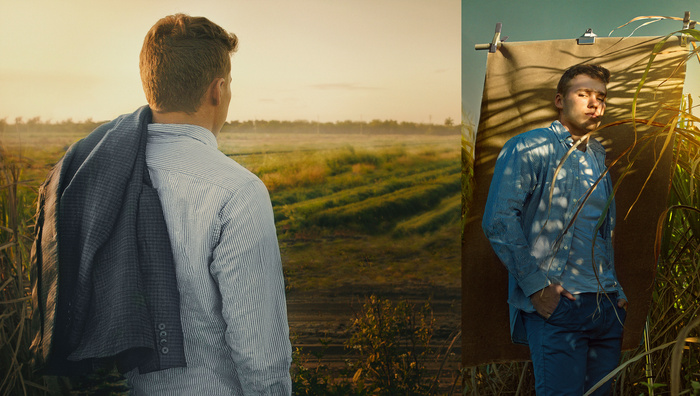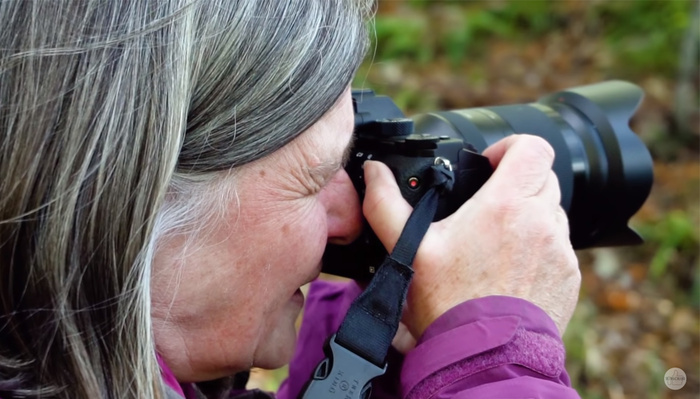
I am an experienced corporate/commercial photographer, and I’ve written this article to help guide my clients into how to prepare for a headshot or portrait session. Most people don’t like having their photograph taken, they find it awkward or can’t stop thinking about one of their perceived weaknesses.
This guide should help reduce some of that stress and explain the process a bit more. I think this article will also be very useful for newer corporate photographers, or simply to fill in any knowledge gaps.
Even if you’re a landscape or a macro photographer, at some point in your career you’re probably going to be asked to take some pictures of people. I believe a great portrait can be made or lost in the posing of the subject. People first, lighting and camera settings second.
The article for clients is below.
We’ve compiled our top tips to help you look your best in your headshot or corporate portrait. Whether this photo will be displayed on your company website, set as your LinkedIn profile picture or attached to your name badge, we want you to be proud to show it off. Lots of new people will see this picture before they meet you, so make sure your first impression counts.
Using the advice below and very little effort, you can ensure that the first impression is that of a well-presented, approachable professional.
Tip #1. Get a good sleep the night before
We know it’s tempting to stay at the networking event for one more drink. Or to watch just one more episode on Netflix. We all know that getting an extra hour or 2 will make a considerable difference the following day. If you’re feeling relaxed and positive, you’ll look that way for the photo session. This will also help reduce bags under your eyes and generally make you look more radiant.
Tip #2. What to wear
People can be unsure of what to wear for a professional photo shoot. We always suggest wearing what you usually would when meeting a potential client. Even though a headshot is just head and shoulders, wearing an un-ironed shirt, or a scruffy t-shirt will show in the photo.
If you usually wear glasses, decide whether you’d like to wear them in your portrait. If you aren’t going to wear them, or aren’t sure, take them off around 15 minutes before. This will allow enough time for the red marks on your nose to disappear.
If you wear makeup, don’t be tempted to over apply. This should be a fairly natural representation of yourself. If you usually choose a bold color lipstick, go for it!
Our advice would be to generally stay away from trends, be it fashion choices or hairstyles. The headshot or portrait should last you at least two years. Nothing will date it faster than wearing something that was in fashion for a single season.
Tip #3. How to pose
Place your body at a 45º angle to the camera and head turned back towards the photographer. Don’t worry if this doesn’t make much sense now, a professional headshot photographer will be able to guide you through this during the shoot.
Keep your back straight. Imagine a physio is taking the picture. A poor posture could evoke a lack of confidence. Through a lens, the way you hold yourself reflects how confident you look, so stand tall and be self-assured. See Amy Cuddy’s TED talk on this topic, “Your body language may shape who you are”:
Let your hands drop by your sides or place them in your pockets. Not doing anything with your hands may feel odd at the time, but it looks much stranger on camera when someone is holding their hands behind their back. Your photographer will guide you in this area, especially if the picture is a portrait and will include your hands or whole body.
Pushing your chin out slightly will separate your face from your neck and body, and define your jawline. To get this right, imagine you’re holding a grapefruit between your chin and chest. Your photographer may ask you to lift your chin or head up slightly, this isn’t because you have a double chin, it’s to ensure the light is hitting your face in the right places.
Tip #4. Work with your best side
Lots of people are aware of having a ‘best side’. This can be due to the shape or symmetry of their face, or even trying to hide a perceived imperfection. Don’t be embarrassed to tell your photographer this, they will work with you to get the best results.
Everyone, in fact, has one eye bigger than the other. By turning your body and head to a 45º angle, placing your bigger eye furthest away will help even out the size difference. It’s not always easy to tell when looking at yourself or someone else, so for most of our clients, we shoot both angles so our clients can choose later on.
Tip #5. Look in a mirror
Rehearse your facial expressions. Everyone prefers the way they look with a certain expression. A full or half smile could work well for a young and passionate entrepreneur. Alternatively, a CEO or a board member in a professional industry may feel that a neutral expression communicates strength.
When posing, try squinting your eyes very slightly. Some photographers call it a ‘squinch’. This can help you remember it on the day. A mix between a squint and a pinch. When someone feels uncomfortable having their photo taken they can react with unnaturally wide eyes. Think of a deer in headlights, that’s what we’re trying to avoid.
The video below by portrait photographer Peter Hurley explains this technique perfectly.
Don’t be afraid to try different poses, and smile. There’s no harm in trying a few different expressions with the photographer so you can choose which you prefer afterward.
To bring out a real smile and avoid looking forced or still in your business portrait, try thinking of something or someone funny. The real emotion will not only help with your smile but also show in your eyes.
Tip #6. Relax
Relax and let the photographer lead the conversation. Most people feel at least a little awkward having their photo taken. A true professional portrait photographer will talk to you and build rapport to ensure that you’re relaxed so they can capture you at your best. Be aware of how much you are talking. If the photographer cracks a joke to make you smile and you’ve already got your mouth wide open replying, it may make it difficult to achieve great results.
We hope these tips help you when posing for headshots. If you liked the article please share it online, or with a friend or colleague. If you have any other tips you think should be added, please leave us a comment below.
P.S. If you are looking for an experienced photographer we would be more than happy to help. We are based in Manchester but travel all over the UK for our clients. Feel free to get in touch for a no-obligation quote.
About the author: Decoy Media is a team of professional photographers based in Manchester, UK, but available internationally. The opinions expressed in this article are solely those of the author. You can find more of their work and writing on their website, blog, Facebook, Twitter, and Instagram. This article was also published here.
from PetaPixel https://ift.tt/2JQVW5t

















